- All
- Journals
- Conferences
2025
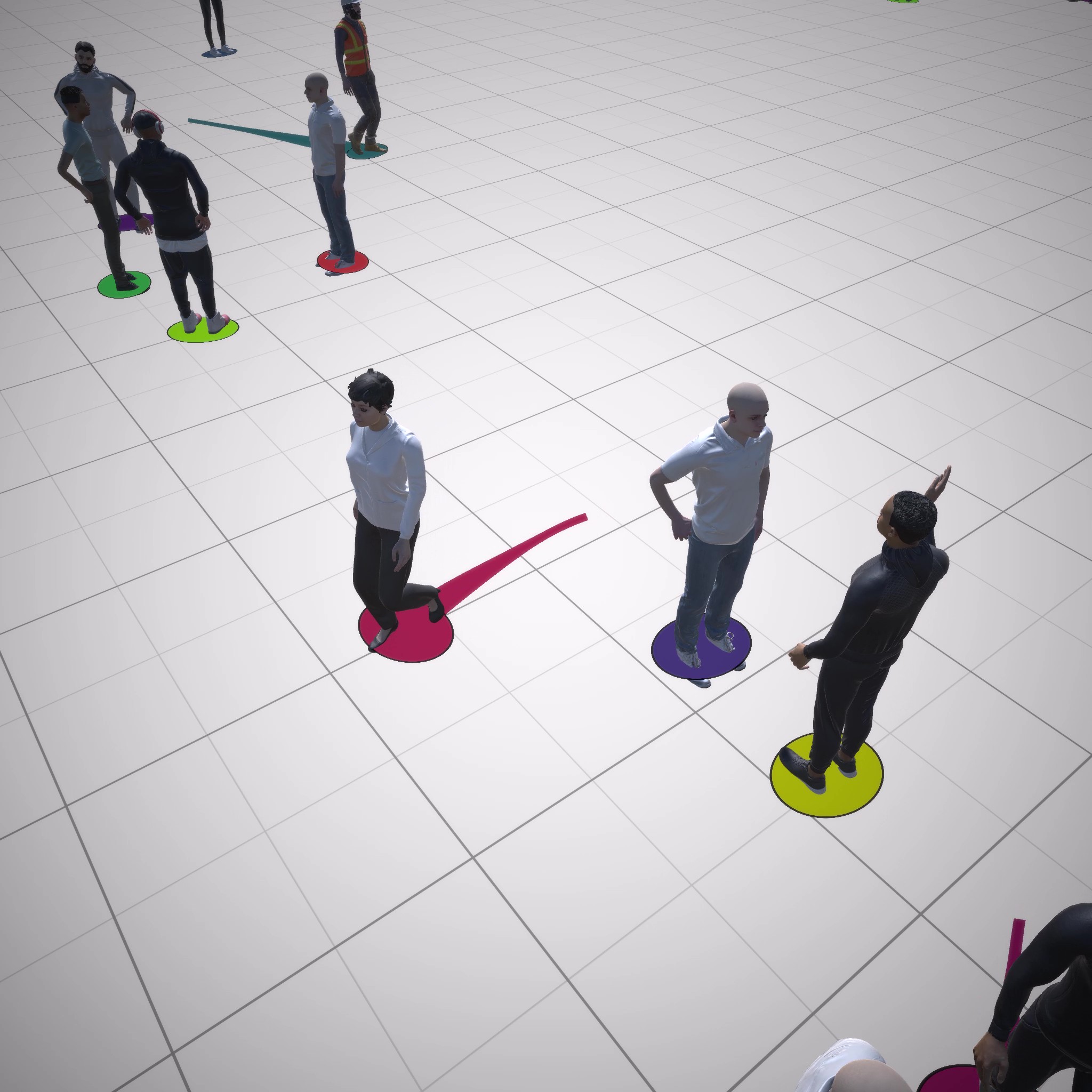
CEDRL: Simulating Diverse Crowds with Example-Driven Deep Reinforcement Learning
Andreas Panayiotou, Andreas Aristidou, Panayiotis CharalambousComputer Graphics Forum (Eurographics '25)
The level of realism in virtual crowds is strongly affected by the presence of diverse crowd behaviors. In real life, we can observe various scenarios, ranging from pedestrians moving on a shopping street, people talking in static groups, or wandering around in a public park. Most of the existing systems optimize for specific behaviors such as goal-seeking and collision avoidance, neglecting to consider other complex behaviors that are usually challenging to capture or define. Departing from the conventional use of Supervised Learning, which requires vast amounts of labeled data and often lacks controllability, we introduce Crowds using Example-driven Deep Reinforcement Learning (CEDRL), a framework that simultaneously leverages multiple crowd datasets to model a broad spectrum of human behaviors. This approach enables agents to adaptively learn and exhibit diverse behaviors, enhancing their ability to generalize decisions across unseen states. The model can be applied to populate novel virtual environments while providing real-time controllability over the agents’ behaviors. We achieve this through the design of a reward function aligned with real-world observations and by employing curriculum learning that gradually diminishes the agents’ observation space. A complexity characterization metric defines each agent’s high-level crowd behavior, linking it to the agent’s state and serving as an input to the policy network. Additionally, a parametric reward function, influenced by the type of crowd task, facilitates the learning of a diverse and abstract behavior “skill” set. We evaluate our model on both training and unseen real-world data, comparing against other simulators, showing its ability to generalize across scenarios and accurately reflect the observed complexity of behaviors. We also examine our system’s controllability by adjusting the complexity weight discovering that higher values lead to more complex behaviors such as wandering, static interactions, and group dynamics like joining or leaving. Finally, we demonstrate our model’s capabilities in novel synthetic scenarios.
2023
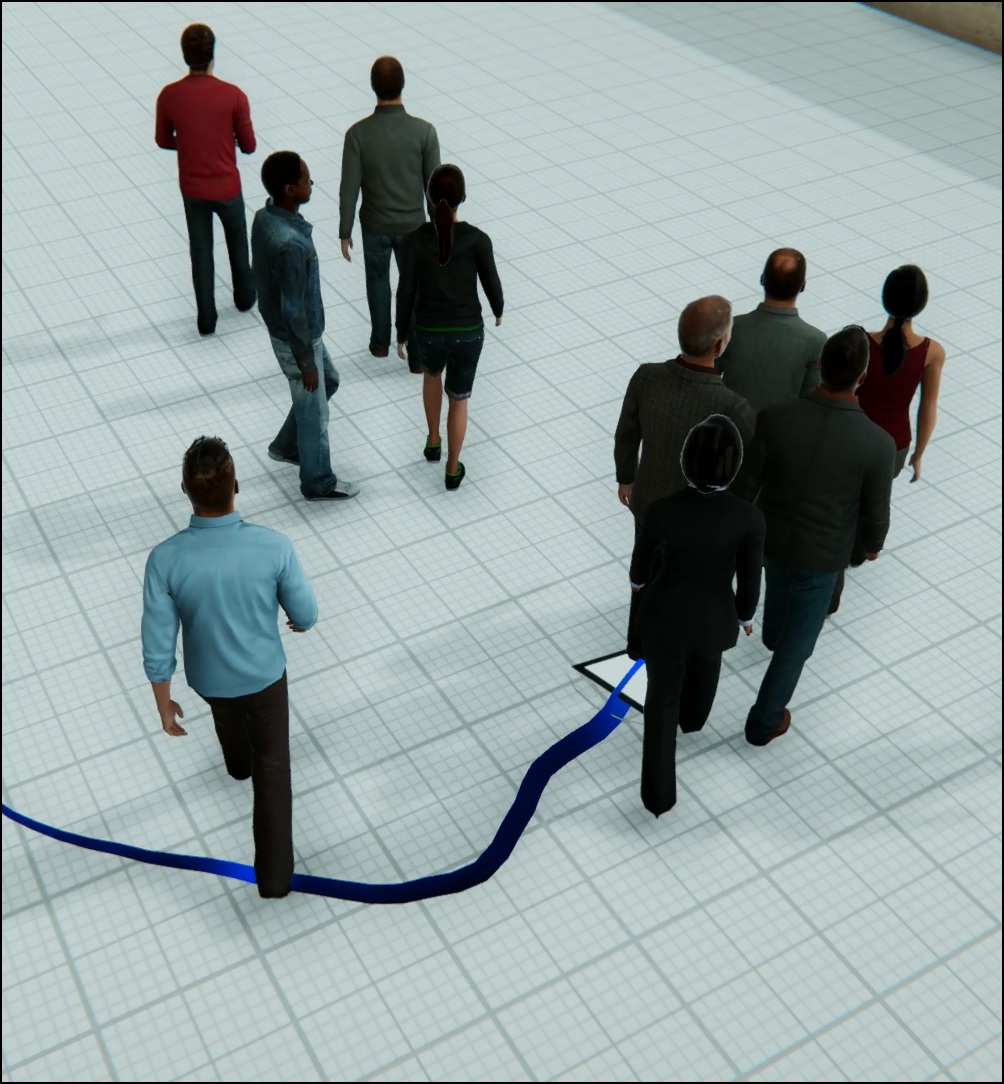
GREIL-Crowds: Crowd Simulation with Deep Reinforcement Learning and Examples
Panayiotis Charalambous, Julien Pettré, Vassilis Vassiliades, Yiorgos Chrysanthou, and Nuria PelechanoACM Transaction on Computer Graphics 42, 4, Article 1 (August 2023)
Simulating crowds with realistic behaviors is a difficult but very important task for a variety of applications. Quantifying how a person balances between different conflicting criteria such as goal seeking,collision avoidance and moving within a group is not intuitive, especially if we consider that behaviors differ largely between people. Inspired by recent advances in Deep Reinforcement Learning, we propose Guided REinforcement Learning (GREIL) Crowds, a method that learns a model for pedestrian behaviors which is guided by reference crowd data. The model successfully captures behaviors such as goal seeking, being part of consistent groups without the need to define explicit relationships and wandering around seemingly without a specific purpose. Two fundamental concepts are important in achieving these results: (a) the per agent state representation and (b) the reward function. The agent state is a temporal representation of the situation around each agent. The reward function is based on the idea that people try to move in situations/states in which they feel comfortable in. Therefore, in order for agents to stay in a comfortable state space, we first obtain a distribution of states extracted from real crowd data; then we evaluate states based on how much of an outlier they are compared to such a distribution. We demonstrate that our system can capture and simulate many complex and subtle crowd interactions in varied scenarios. Additionally, the proposed method generalizes to unseen situations, generates consistent behaviors and does not suffer from the limitations of other data-driven and reinforcement learning approaches.
2022
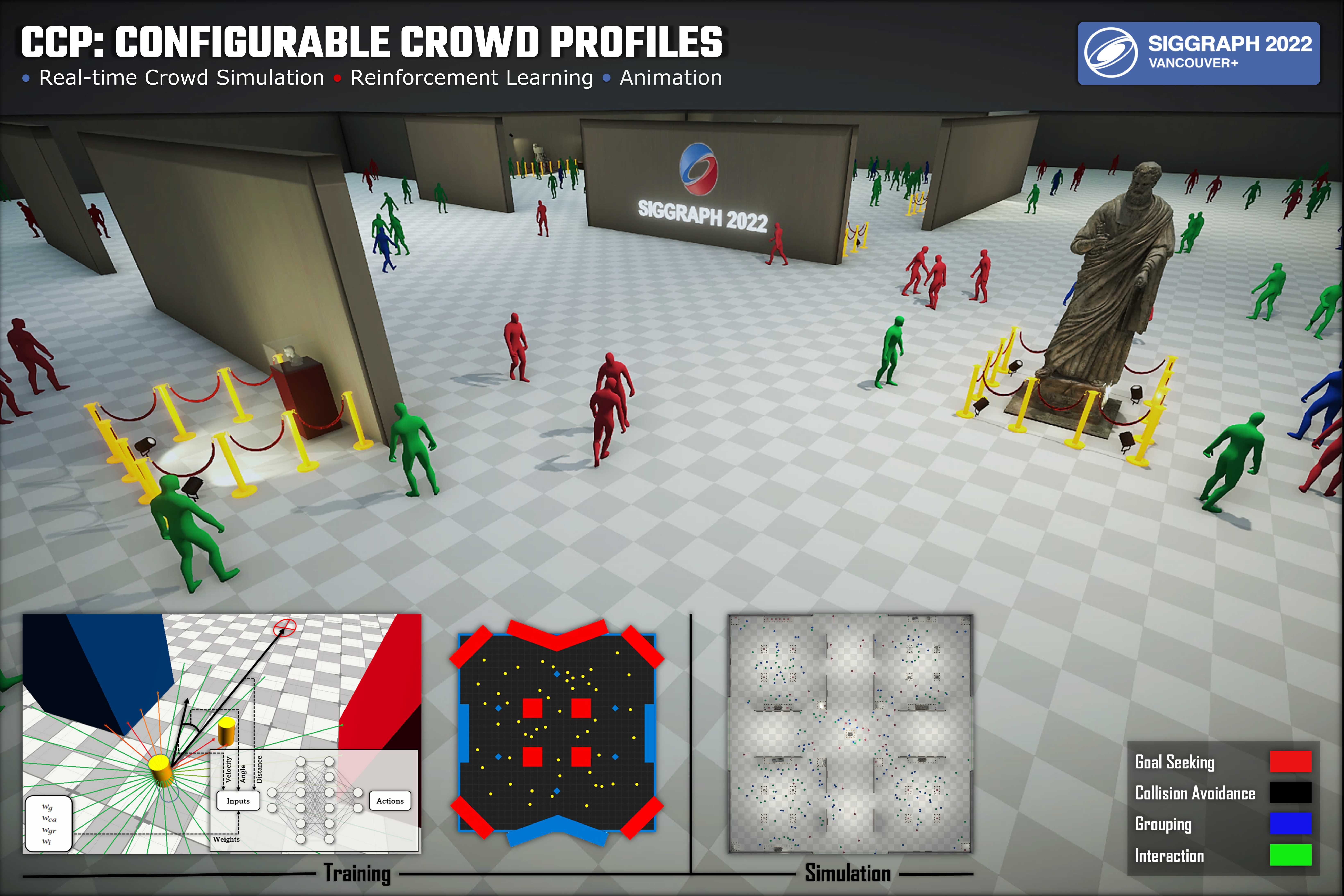
CCP: Configurable Crowd Profiles
Andreas Panayiotou, Theodoros Kyriakou, Marilena Lemonari, Yiorgos Chrysanthou, Panayiotis CharalambousSIGGRAPH '22 Conference Proceedings
Diversity among agents' behaviors and heterogeneity in virtual crowds in general, is an important aspect of crowd simulation as it is crucial to the perceived realism and plausibility of the resulting simulations. Heterogeneous crowds constitute the pillar in creating numerous real-life scenarios such as museum exhibitions, which require variety in agent behaviors, from basic collision avoidance to more complex interactions both among agents and with environmental features. Most of the existing systems optimize for specific behaviors such as goal seeking, and neglect to take into account other behaviors and how these interact together to form diverse agent profiles.In this paper, we present a RL-based framework for learning multiple agent behaviors concurrently. We optimize the agent policy by varying the importance of the selected behaviors (goal seeking, collision avoidance, interaction with environment, and grouping) while training; essentially we have a reward function that changes dynamically during training. The importance of each separate sub-behavior is added as input to the policy, resulting in the development of a single model capable of capturing as well as enabling dynamic run-time manipulation of agent profiles; thus allowing configurable profiles. Through a series of experiments, we verify that our system provides users with the ability to design virtual scenes; control and mix agent behaviors thus creating personality profiles, and assign different profiles to groups of agents. Moreover, we demonstrate that interestingly the proposed model generalizes to situations not seen in the training data such as a) crowds with higher density, b) behavior weights that are outside the training intervals and c) to scenes with more intricate environment layouts.
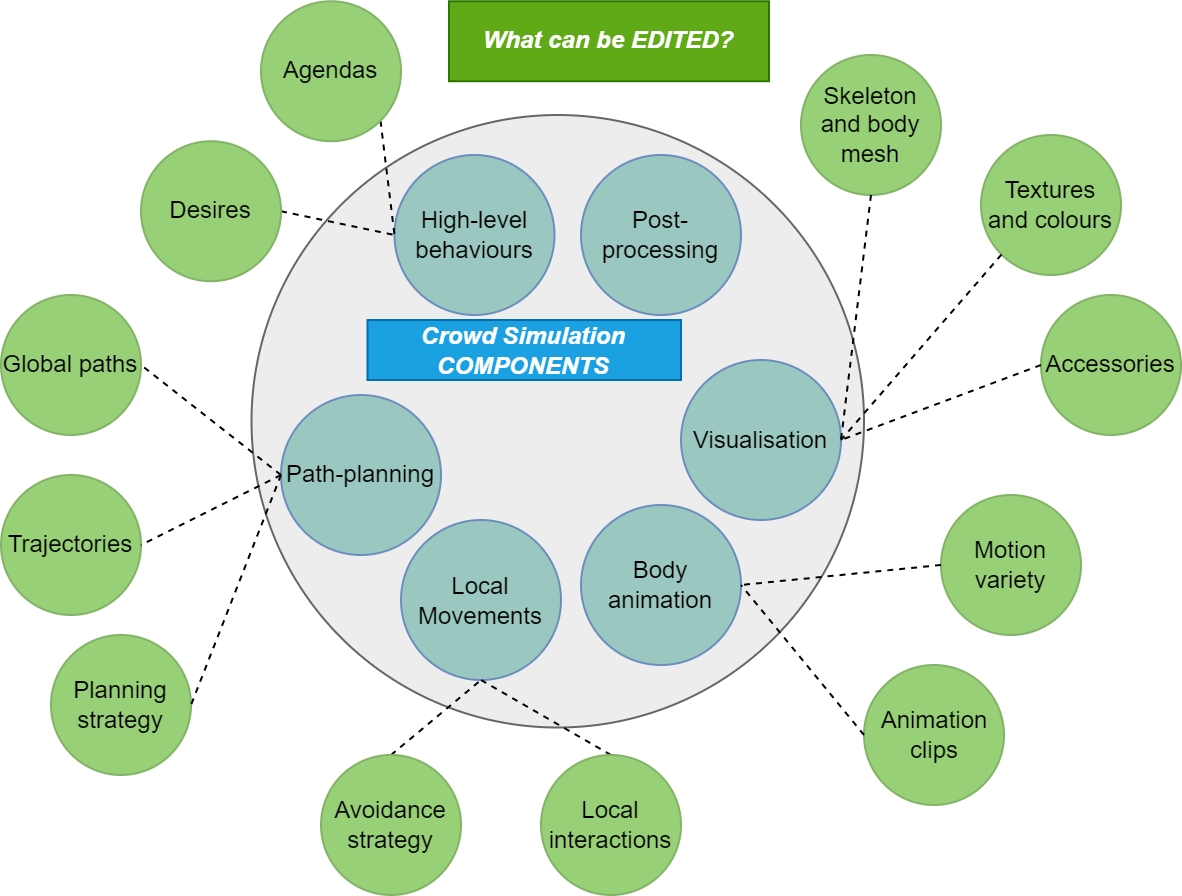
Authoring Virtual Crowds: A Survey
Marilena Lemonari, Rafael Blanco, Panayiotis Charalambous, Nuria Pelechano, Marios Avraamides, Julien Pettré, Yiorgos ChrysanthouEurographics'22, Computer Graphics Forum
Recent advancements in crowd simulation unravel a wide range of functionalities for virtual agents, delivering highly-realistic, natural virtual crowds. Such systems are of particular importance to a variety of applications in fields such as: entertainment (e.g., movies, computer games); architectural and urban planning; and simulations for sports and training. However, providing their capabilities to untrained users necessitates the development of authoring frameworks. Authoring virtual crowds is a complex and multi-level task, varying from assuming control and assisting users to realise their creative intents, to delivering intuitive and easy to use interfaces, facilitating such control. In this paper, we present a categorisation of the authorable crowd simulation components, ranging from high-level behaviours and path-planning to local movements, as well as animation and visualisation. We provide a review of the most relevant methods in each area, emphasising the amount and nature of influence that the users have over the final result. Moreover, we discuss the currently available authoring tools (e.g., graphical user interfaces, drag-and-drop), identifying the trends of early and recent work. Finally, we suggest promising directions for future research that mainly stem from the rise of learning-based methods, and the need for a unified authoring framework.
2021
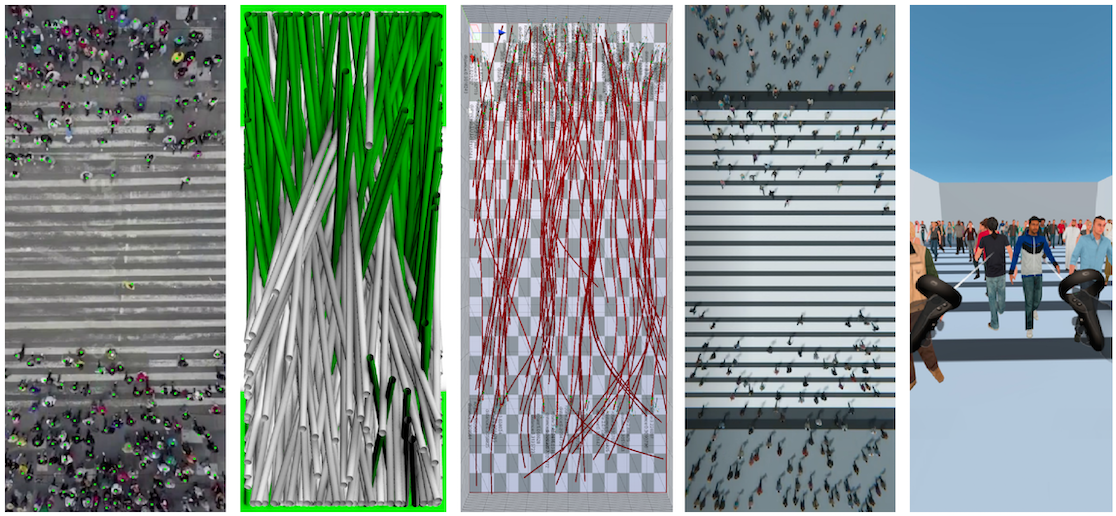
Perceived realism of pedestrian crowds trajectories in VR
Daniele Giunchi, Riccardo Bovo, Panayiotis Charalambous, Fotis Liarokapis, Alastair Shipman, Stuart James, Anthony Steed, Thomas HeinisVRST '21: Proceedings of the 27th ACM Symposium on Virtual Reality Software and Technology
Crowd simulation algorithms play an essential role in populating Virtual Reality (VR) environments with multiple autonomous humanoid agents. The generation of plausible trajectories can be a significant computational cost for real-time graphics engines, especially in untethered and mobile devices such as portable VR devices. Previous research explores the plausibility and realism of crowd simulations on desktop computers but fails to account the impact it has on immersion. This study explores how the realism of crowd trajectories affects the perceived immersion in VR. We do so by running a psychophysical experiment in which participants rate the realism of real/synthetic trajectories data, showing similar level of perceived realism.
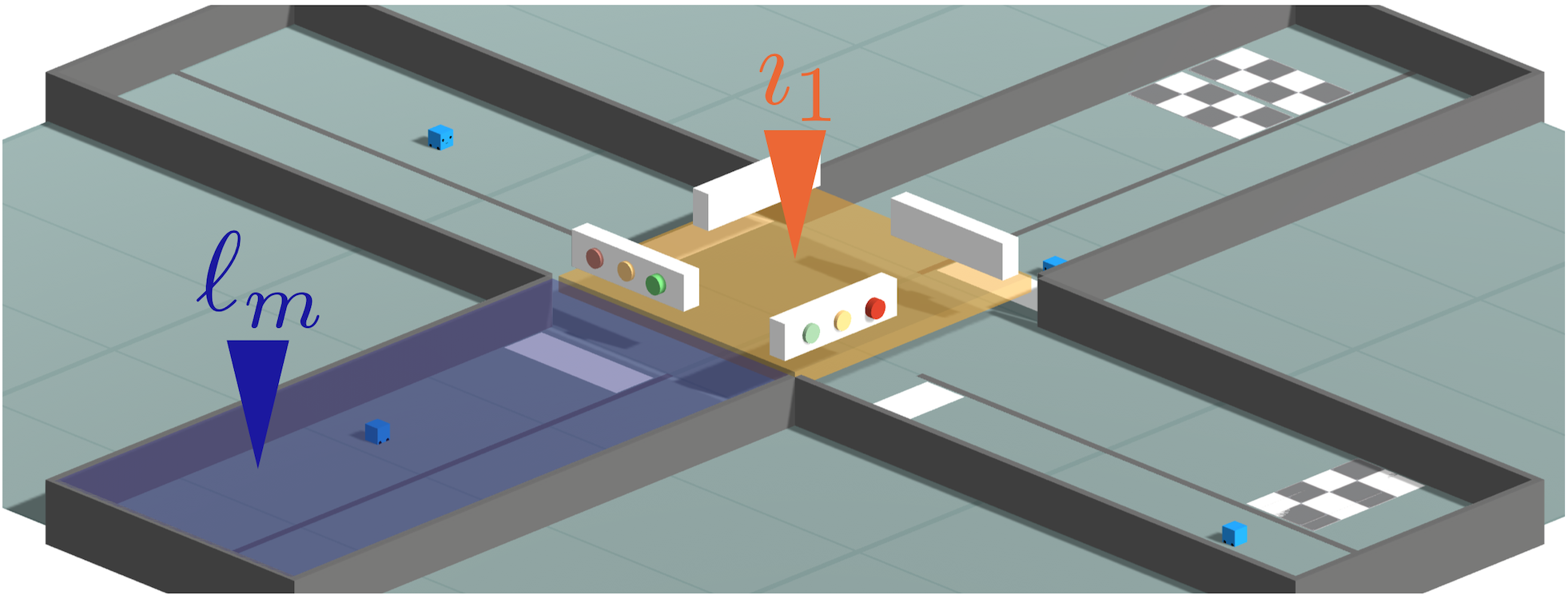
Towards a multi-agent non-player character road network: a Reinforcement Learning approach
Stela Makri and Panayiotis Charalambous2021 IEEE Conference on Games (CoG)
Creating detailed and interactive game environments is an area of great importance in the video game industry. This includes creating realistic Non-Player Characters which respond seamlessly to the players actions. Machine learning had great contributions to the area, overcoming scalability and robustness shortcomings of hand-scripted models. We introduce the early results of a reinforcement learning approach in building a simulation environment for heterogeneous, multi-agent non-player characters in a dynamic road network game scene.
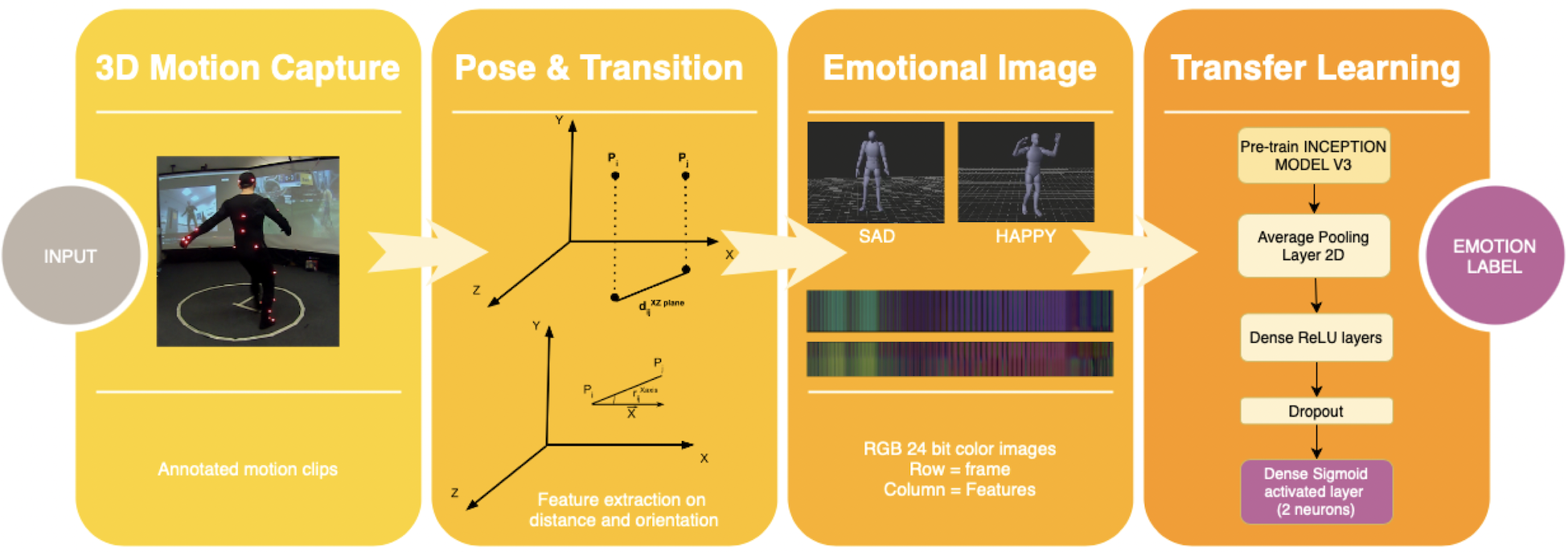
Emotion Recognition from 3D Motion Capture Data using Deep CNNs
Haris Zacharatos, Christos Gatzoulis, Panayiotis Charalambous and Yiorgos Chrysanthou2021 IEEE Conference on Games (CoG)
Designing computer games requires a player-centered approach. Whilst following guidelines and functional requirement specifications is part of the process, observing and measuring qualities of the players experience is key in providing feedback to game designers. Moreover, it can also be used to create adaptive and personalized experiences for players. With the advancement of affective computing and gaming user interfaces, the opportunity to recognize the player's emotions becomes more feasible and each different modality can offer additional information as affect expression is less defined as compared to action selection. This paper explores the use of 3D skeleton motion data transformed to 2D images that encode pose and movement dynamics to represent annotated emotions. The 2D images are then used to train and test the Inception V3 CNN model on a binary classification emotion recognition between happy and sad emotions. Preliminary results in unseen test data indicate that the above transformation technique can capture emotional information. The paper also discusses future directions that may improve the effectiveness of the proposed method on a wider scale.
2020
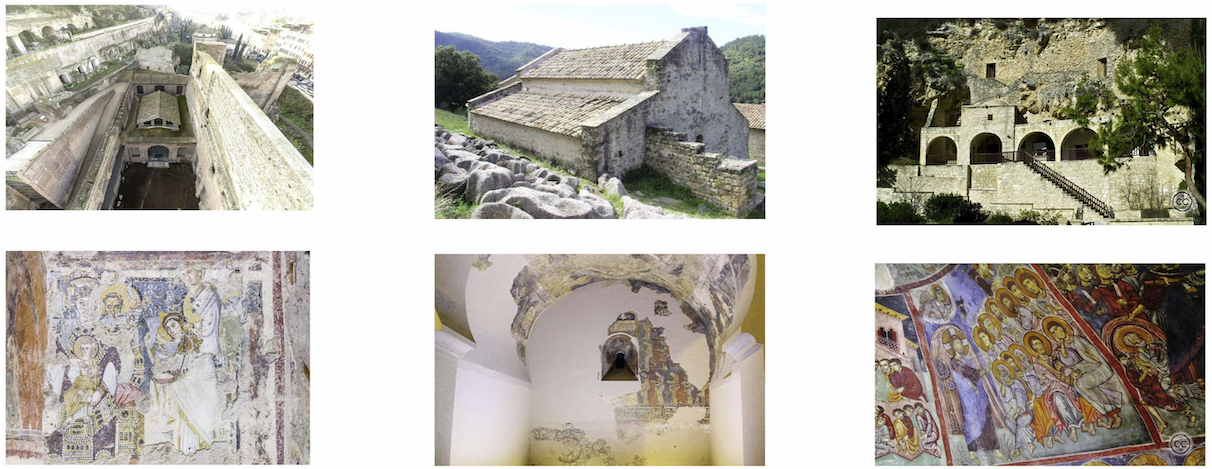
Digital Layered Models of Architecture and Mural Paintings over Time
Milagros Guardia, Paola Pogliani, Giulia Bordi, Panayiotis Charalambous, Carlos Andujar, Xavier PueyoEurographics Workshop on Graphics and Cultural Heritage (GCH), 2020
The European project Enhancement of Heritage Experiences: The Middle Ages. Digital Layered Models of Architecture and Mural Paintings over Time (EHEM), approved in the call for JPICH Conservation, Protection and Use (0127) in the year 2020, aims to obtain virtual reconstructions of medieval artistic heritage - architecture with mural paintings - that are as close as possible to the original at different times, incorporating historical-artistic knowledge and the diachronic perspective of heritage, as an instrument for researchers, restorers and heritage curators and to improve the visitor's perceptions and experiences.
2019
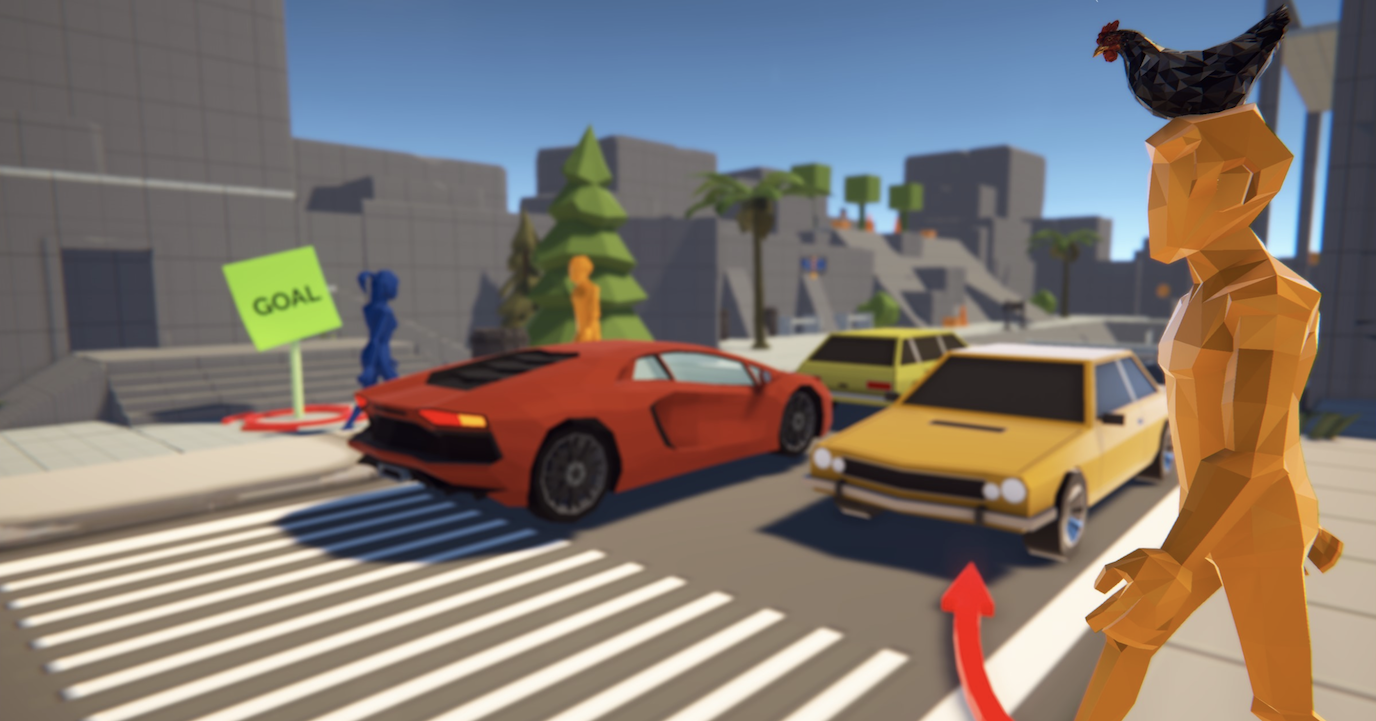
Why did the human cross the Road?
Panayiotis Charalambous and Yiorgos Chrysanthou.Motion, Interaction and Games (MIG ’19). Association for Computing Machinery, New York, NY, USA, Article 47, 1–2.
Humans at rest tend to stay at rest. Humans in motion tend to cross the road – Isaac Newton.” Even though this response is meant to be a joke to indicate the answer is quite obvious, this important feature of real world crowds is rarely considered in simulations. Answering this question involves several things such as how agents balance between reaching goals, avoid collisions with heterogeneous entities and how the environment is being modeled. As part of a preliminary study, we introduce a reinforcement learning framework to train pedestrians to cross streets with bidirectional traffic. Our initial results indicate that by using a very simple goal centric representation of agent state and a simple reward function, we can simulate interesting behaviors such as pedestrians crossing the road through crossings or waiting for cars to pass.
 V-EUPNEA
V-EUPNEA